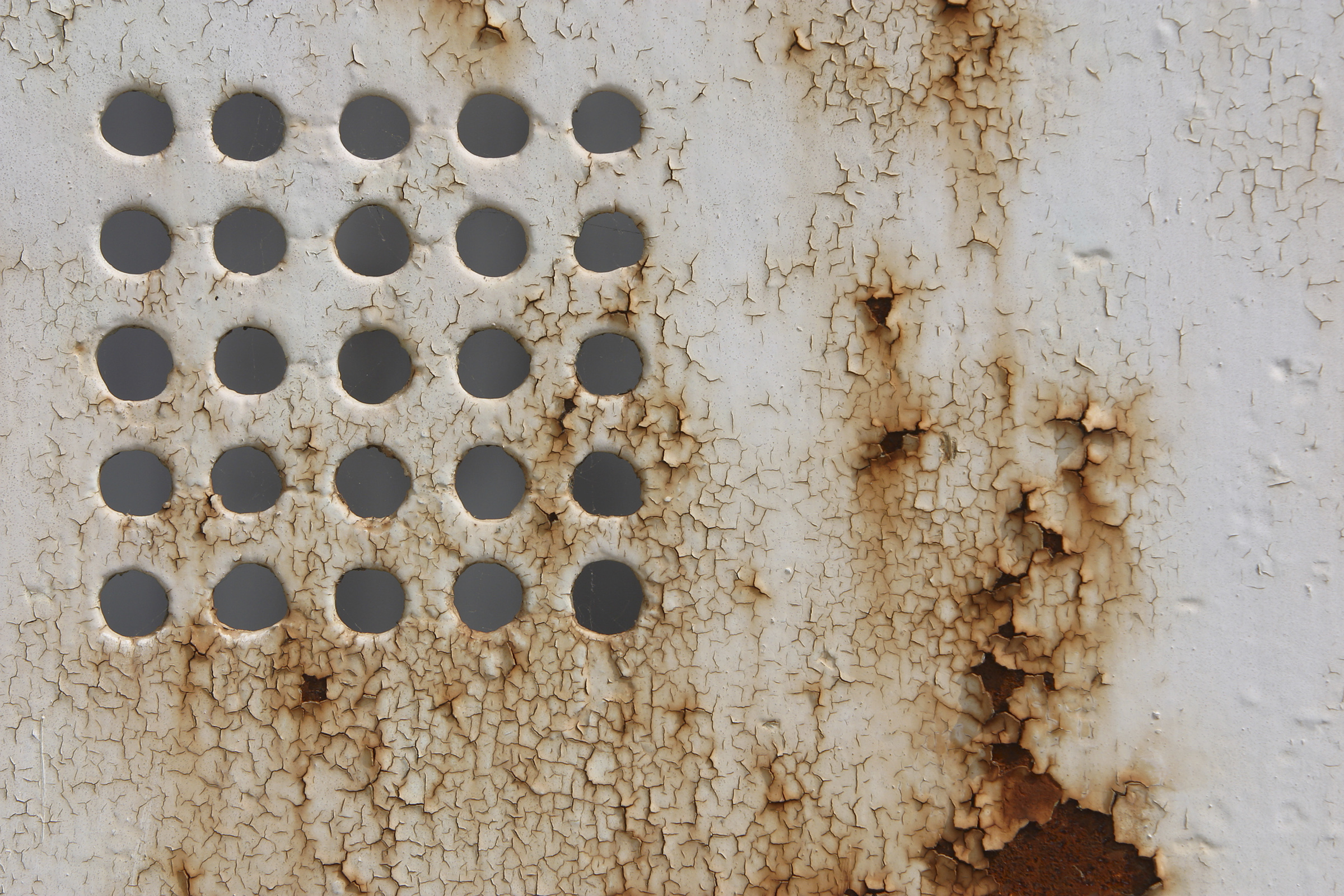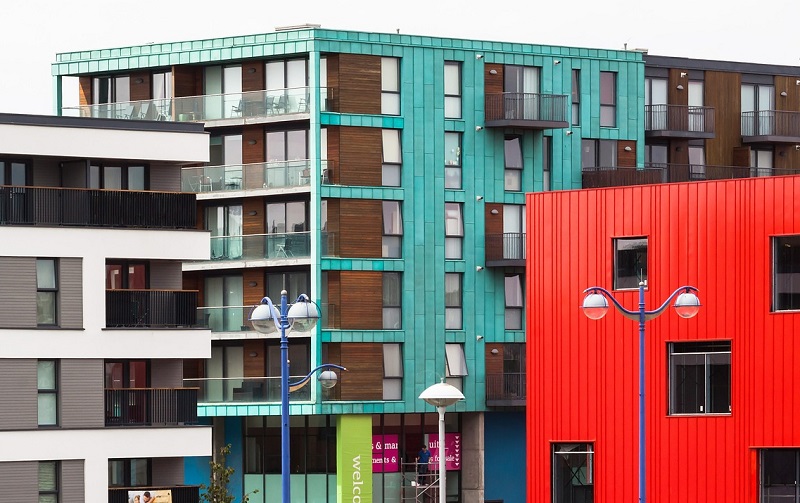Corrosion in built assets

|
| The rust on this painted metal grille was probably caused originally by cracks in the paint coating leading to oxidation and rust of the metal which in turn caused the paint to flake off further and so continue the process. |
Corrosion is the gradual destruction of metals (mostly) due to natural processes, of which the main is oxidation, although there are others. It occurs when metals are exposed to the environment and are attacked by liquids or gasses whose actions instigate chemical reactions. The process can be either chemical or electrochemical. Ceramics and polymers are also subject to corrosion although the process is usually called ‘degradation’.
The rate and form of corrosion will depend on the type of metal in question (i.e how reactive it is) and the nature of the environment. The resulting chemical reaction converts the stable form of a metal to its oxide, hydroxide or sulphide, and thereby affects its strength, appearance and permeability to liquids.
The corrosion process usually involves a loss of electrons from the metal to form more stable compounds such as iron oxide – which has fewer free electrons to be taken away. Some metals are more inert and so have better natural resistance to corrosion, this is why metals such as gold and platinum are almost always found naturally in pure form. In contrast, iron, which is a lot less stable, is found mainly as iron ore (oxidised iron e.g haematite, magnetite, siderite) and requires refining (i.e reversing the corrosion process to remove the oxygen or other impurities) for use in a variety of applications.
One of the most common forms of the oxidation process is rust, which results from electro-chemical corrosion due to contact with moisture or polluted air, causing a metal, such as iron, to be converted into red-orange-coloured iron oxide and salts of iron, accompanied by a volumetric expansion.

|
| A green patina has formed on the copper cladding of this appartment building. |
With some metals such as steel, zinc and copper, the oxide that forms (sometimes called a ‘patina’) seals the surface and acts as a protective barrier against further corrosion. For example, copper roof sheeting acquires its characteristic green patina, while zinc sheet produces a grey-coloured patina. Steel oxidation results in an attractive ruddy-brown-coloured patina that has been prized by architects and is known as weathering steel. Used for a variety of architectural applications, particularly exposed steel structures, it is also self-healing when chipped or damaged. A well-known commercial variety is Cor-Ten, developed by the US Steel Corporation to obviate the need to paint steel but with the benefit of a tough surface.
Some metal alloys can corrode simply on exposure to air but the process can be exacerbated by the presence of warm temperatures and certain substances such as sulphates and other acidic agents. Some of these may be present in acid rain. However, alloys can have better inherent corrosion resistance than pure metals.
Corrosion occurs mainly on exposed surfaces which means that preventative measures such as paints and coatings can be applied to prevent or delay the onset of the process. Other protection methods such as galvanising and anodising can be applied in the factory before a product is installed.
[edit] Related articles on Designing Buildings
- Brittle fracture.
- Corrosion coupons.
- Corrosion inhibitor.
- Corrosion resistance.
- Corrosion resistant alloy CRA.
- Crevice corrosion.
- Deterioration.
- Dezincification.
- Galvanic corrosion.
- Graphitisation.
- Hydrogen embrittlement.
- Marine corrosion.
- Microbially Influenced Corrosion.
- Microbiologically influenced corrosion.
- Pepper pot corrosion
- Pitting.
- Rosette corrosion.
- Rust.
- Stress corrosion cracking.
- Under-deposit corrosion.
Featured articles and news
One of the most impressive Victorian architects. Book review.
RTPI leader to become new CIOB Chief Executive Officer
Dr Victoria Hills MRTPI, FICE to take over after Caroline Gumble’s departure.
Social and affordable housing, a long term plan for delivery
The “Delivering a Decade of Renewal for Social and Affordable Housing” strategy sets out future path.
A change to adoptive architecture
Effects of global weather warming on architectural detailing, material choice and human interaction.
The proposed publicly owned and backed subsidiary of Homes England, to facilitate new homes.
How big is the problem and what can we do to mitigate the effects?
Overheating guidance and tools for building designers
A number of cool guides to help with the heat.
The UK's Modern Industrial Strategy: A 10 year plan
Previous consultation criticism, current key elements and general support with some persisting reservations.
Building Safety Regulator reforms
New roles, new staff and a new fast track service pave the way for a single construction regulator.
Architectural Technologist CPDs and Communications
CIAT CPD… and how you can do it!
Cooling centres and cool spaces
Managing extreme heat in cities by directing the public to places for heat stress relief and water sources.
Winter gardens: A brief history and warm variations
Extending the season with glass in different forms and terms.
Restoring Great Yarmouth's Winter Gardens
Transforming one of the least sustainable constructions imaginable.
Construction Skills Mission Board launch sector drive
Newly formed government and industry collaboration set strategy for recruiting an additional 100,000 construction workers a year.
New Architects Code comes into effect in September 2025
ARB Architects Code of Conduct and Practice available with ongoing consultation regarding guidance.
Welsh Skills Body (Medr) launches ambitious plan
The new skills body brings together funding and regulation of tertiary education and research for the devolved nation.
Paul Gandy FCIOB announced as next CIOB President
Former Tilbury Douglas CEO takes helm.






















